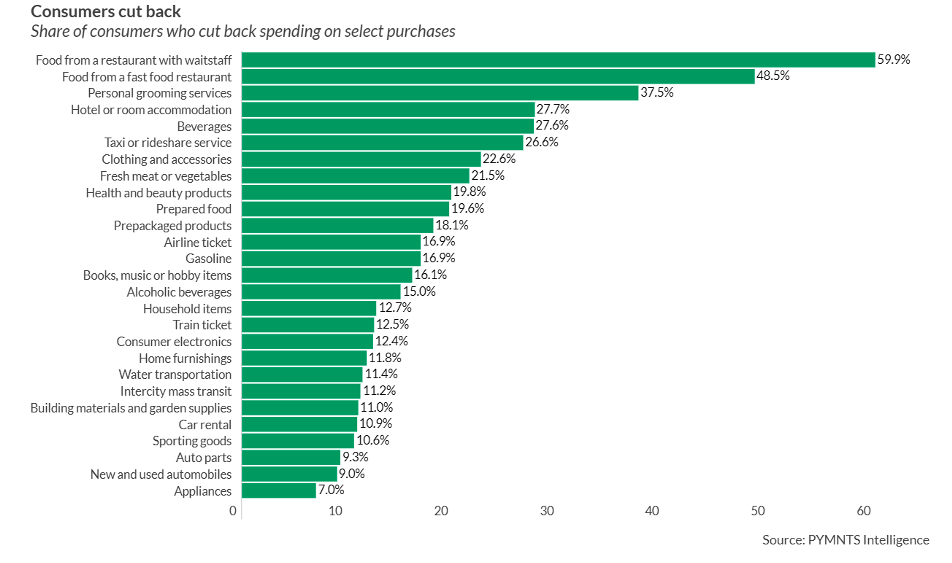Despite a slight decrease in inflation, Consumer Price Index data showed that consumer sentiment has not caught up, impacting spending in industries that depend on tips.
The PYMNTS Intelligence study “Tipping Over: Consumers Reducing Spending and Avoiding Tips” drew on insights from a survey of 2,000 U.S. consumers to better understand the link between their sentiments on inflation and tipping habits, as well as their views on the increasing pressure to tip across industries.
According to the study, the demand for tips has expanded across various sectors as real wage growth fails to keep up. This has resulted in almost 3 in 10 consumers perceiving tipping as excessive. For instance, fast-food establishments, personal grooming services, dine-in restaurants, and even grocery stores are increasingly requesting tips.
 The shift in tipping norms has frustrated 23% of consumers who have tipped less in the past 30 days compared to a year ago. Specifically, these individuals reported tipping approximately $19 less per month compared to the same period last year.
The shift in tipping norms has frustrated 23% of consumers who have tipped less in the past 30 days compared to a year ago. Specifically, these individuals reported tipping approximately $19 less per month compared to the same period last year.
Additionally, tipping has impacted spending, with 17% of consumers across all income groups reporting that they have curtailed their spending in response to increasing tipping expenses. Younger consumers, particularly Generation Z and millennials, are more likely to express this sentiment, with 27% and 23%, respectively, stating that they have cut back on spending due to the high cost of tipping. In contrast, 13% of Generation X, baby boomers and seniors shared the same view.
Advertisement: Scroll to Continue
When it comes to where consumers are trimming their spending due to tipping costs, dining out takes the lead. The data indicated that 60% of these consumers have reduced their spending on food from table-service restaurants, while 49% have done so in quick-service restaurants where tipping is increasingly encouraged. Similarly, approximately 27% and 26% of consumers have tightened their budgets for hotels and rideshare services, respectively, while 22% have curbed spending on clothing for the same reason.
On the upside, consumers whose wages have kept up with inflation are better positioned to handle the increased pressure to tip. Almost half of consumers whose wages have kept pace with inflation — 18% of consumers, overall — have chosen to increase the amount and frequency of their tipping, driven by philanthropic sentiment and social pressure. Fifty percent of this cohort also said service workers need more money during times of high inflation, while 36% said they feel socially compelled to assist them.
However, even as this group adapts positively to the changing landscape, the broader consumer base faces challenges as inflation erodes purchasing power. Tipping, once limited to specific industries, has extended its reach, leading to reduced spending across various sectors — from dining out to purchases in industries traditionally exempt from tipping.
Merchants and retailers should take note of these trends, as widespread spending cutbacks may ensue if tipping practices persist and wages lag behind inflation.

